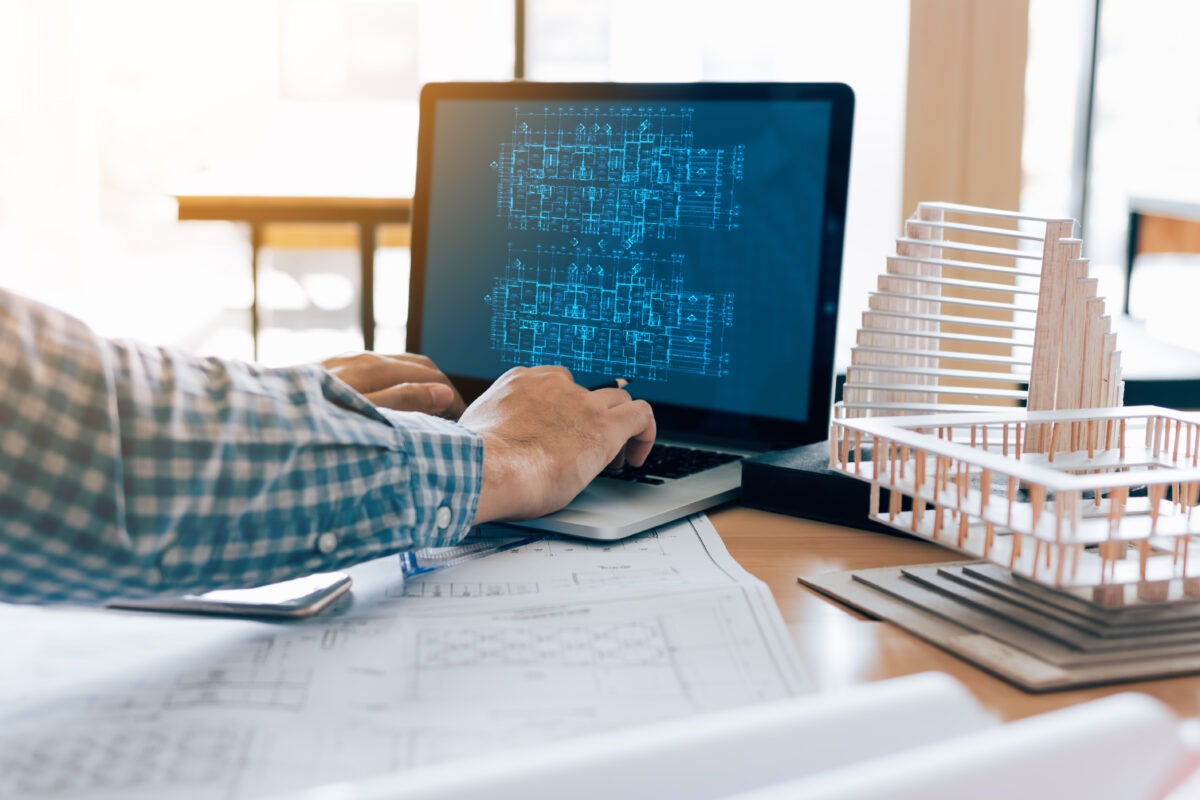
According to a recent study, facility owners pay out 60-80% of overall lifecycle expenses on operations and maintenance after construction completion. Emergency repairs and unforeseen downtime are the primary reasons why conventional reactive maintenance drains the budget.
This is precisely when digital twin technology comes into the picture. It delivers a more innovative path forward by creating dynamic virtual clones of buildings that can anticipate failures before they affect operations. This evolution from reactive to predictive operations has changed how large-scale facilities handle their O&M expenses.
This technology can also unify live sensor information with BIM to improve performance over the facility’s operational lifecycle. By connecting design intent and operational reality, digital twins help facility managers make data-based choices that prolong equipment lifespan and lower energy waste.
For U.S.-based AEC businesses, this technology exemplifies a tactical edge in delivering lasting value to clients managing diverse types of large facilities.
Role of Digital Twin in Design-to-Operate Workflows
A digital twin is basically a vibrant digital replica of a physical asset. It continuously updates with live data from its real-life counterpart. Contrary to static BIM models used during both design and construction, digital twins change throughout the operational stage. This constant evolution happens by integrating business automation systems, IoT sensor data, and performance metrics. This generates a living model that facility managers utilize to simulate scenarios, improve system performance, and anticipate maintenance needs.
Bear in mind that the Design-to-Operate approach takes advantage of digital twins to convert design intent effortlessly into operational initiatives. When BIM information from MEP, architectural, and structural verticals comes into a digital twin platform, facility teams get a clear spatial context for each asset, system, and its components.
This uninterrupted flow eradicates information gaps that usually happen while handing over a project. This is because, during this time, critical design information might be lost or siloed when systems are disconnected. Note that digital twins centralize data, making it easily accessible for preemptive facility management tactics aligned with original design objectives.
Main Benefits Related to Reducing O&M Costs
Realistically, digital twins bring quantifiable cost reductions across several operational areas. Research has shown that predictive maintenance, facilitated by digital twins, can curtail maintenance expenses by up to 30% and prolong machine life by multiple years.
Facilities that incorporate strategic digital twin predictive maintenance can experience a 50-70% decrease in unwanted downtime while optimizing maintenance efficiency by 35-45%. Evidently, conventional monitoring cannot achieve such results. These savings come from shifting maintenance from reactive firefighting to proactive scheduling, considering the actual asset condition.
So, the main cost-reduction gains involve:
- Energy Optimization: Since digital twins track live usage patterns, they help spot inefficiencies and employ corrective actions that allow for considerable energy savings every year.
- Predictive Maintenance: AI-driven analytics effectively predict equipment failures ahead of time. This cuts down on emergency repair expenses and eliminates expensive downtime.
- Increased Asset Lifespan: Nonstop monitoring and prompt interventions decelerate equipment degradation, amplifying the return on capital investments.
- Minimal Operational Disruptions: Scheduled maintenance during off-peak hours decreases the impact on occupants and revenue-generating activities.
All these benefits compound over time. Some facilities even report 15% reductions in facility management expenses and 30% in operational costs with the help of optimized resource management. The feature to virtually test system configurations prior to implementing physical modifications further curtails trial-and-error costs.
Linking BIM with Digital Twins for Seamless Operations
BIM caters to building digital twins by being the foundational data source. This happens during the design-to-operation transition. The BIM model needs to contain equipment protocols, geometric data, system relationships, and manufacturing data gathered over the design and construction stages. So, when this organized data goes into a digital twin platform, it delivers the informational and spatial pillars that facility teams require for effective asset management.
COBie data standards ensure this integration by regulating how building information transfers from design and construction teams to facility operations. These standards capture vital asset information comprising product data sheets, equipment lists, warranties, spare parts lists, and preventive maintenance schedules.
All this data is gathered in a format that facility management systems can directly and easily consume. Ultimately, this rules out manual data re-entry and guarantees precision during the handover procedure.
The operation starts with importing design models from Revit or similar BIM platforms into digital twin software (such as Autodesk Tandem). Next, live operational data from IoT sensors, building management systems, and other linked devices layers onto this geometric backbone. The result of this is a holistic digital replica that merges as-designed geometry with as-operated performance data. Consequently, facility managers achieve both robust and granular visibility into building systems.
Predictive Maintenance Using Real-Time Monitoring
Predictive maintenance signifies the most evolving application of digital twins for O&M cost-cutting. IoT sensors consistently gather information on parameters like humidity, temperature, vibration, airflow rate, and energy usage from essential building systems. Here, machine learning algorithms play a key role. They assess the live data stream against verified baselines to spot anomalies that signal impending failures.
Real-life applications of predictive maintenance entail:
- HVAC Optimization: Digital twins supervise temperature differentials, airflow, and equipment vibration to forecast filter saturation, compressor failures, and mechanical wear prior to any degradation in system performance.
- Diagnosis of Equipment Fault: Rule-focused reasoning engines assess sensor patterns to detect root causes of discrepancies, allowing targeted repairs instead of replacing components.
- Maintenance Scheduling: Predictive notifications inform maintenance teams about potential issues well in advance, enabling cost-effective scheduled interventions during planned downtime.
- Performance Benchmarking: Past data assembled by a digital twin creates performance baselines that unveil degradation trends and guide capital planning choices.
The transition from reactive to predictive strategies basically alters maintenance economics. Facilities incorporating digital twin predictive maintenance can experience significant reductions in unwanted downtime while boosting maintenance efficiency to a considerable extent.
Implementation Specifications for AEC Businesses
To implement digital successfully, meticulous planning is vital during the design and construction stages. AEC businesses need to organize BIM data to match facility management specifications from project initiation instead of retrofitting operational data after handover. This implies specifying COBie-adherent standards, creating asset classification systems, and coordinating with facility management teams to demonstrate data requirements during the early design phase.
Technical infrastructure is the next critical consideration. Digital twins need stable data connectivity, IoT sensor networks, and cloud-powered platforms to process and visualize operational information. AEC firms must coordinate with controls contractors and technology providers to assure alignment of sensor placement with digital twin monitoring goals articulated during MEP design. Moreover, edge computing proficiencies may become mandatory for large facilities producing high-volume sensor data streams, requiring instant processing.
Data security and system integration are also consistently challenging. They call for proactive management. With abundant real-time data being transferred and stored, comprehensive cybersecurity measures should safeguard sensitive facility data. Integration with prevailing building automation systems, enterprise resource planning platforms, and computerized maintenance management systems is also essential. It ensures that the digital twin is the central hub and not another siloed tool. So, training facility management members in the digital twin workflow is key to realizing enduring ROI from the technology investment.
Final Notes
Therefore, in transforming O&M economics for large-scale facilities, the digital twin plays a significant role. It enables energy optimization, predictive maintenance, and data-based decision-making. The documented cost reductions exemplify quantifiable returns that compound across a facility’s operational life. For AEC businesses in the U.S., delivering digital twin-enabled facilities places them as tactical partners in lasting operational success.
Uppteam’s BIM services offer the organized, COBie-conformant BIM data foundations that digital twins need to operate seamlessly. By delivering precise MEP, architectural, and structural models with the thorough parameter data that facility teams need, we facilitate hassle-free design-to-operate workflows. Uppteam ensures your project exploits the full potential of digital twin technology to decrease O&M costs across various facility portfolios.


















